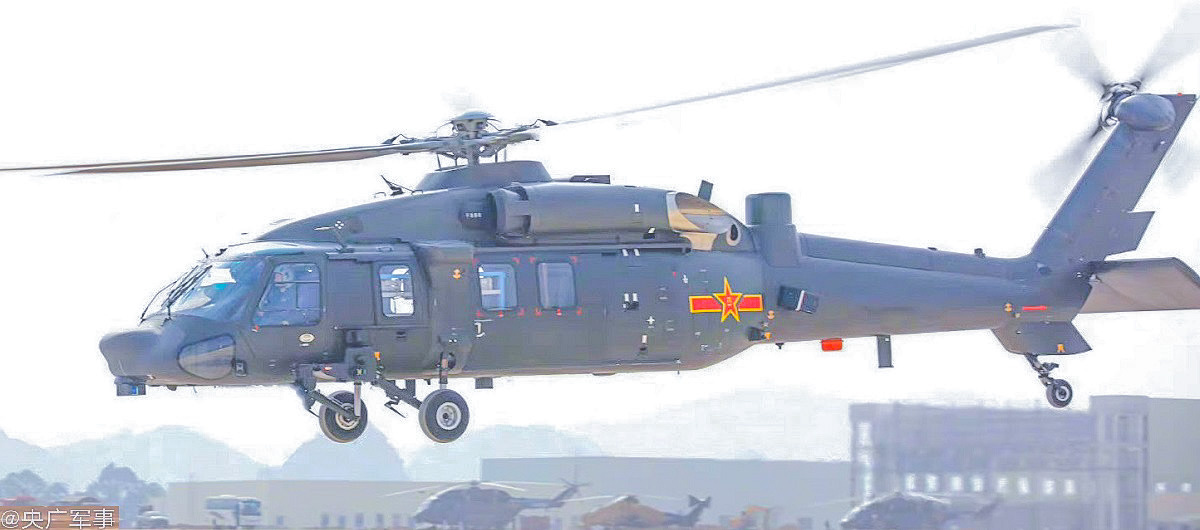PLA Ground Force Helicopters Undertake Maritime Search and Rescue Training
🇨🇳 A small but important step in preparing for large-scale air assaults on Taiwan
Chinese state media has recently released videos documenting training events in which People’s Liberation Army Ground Force (PLAGF) helicopters undertake maritime search and rescue training. While minor events in the context of a massive military organization undergoing far-reaching modernization efforts, these training events amount to crucial steps in preparing for a Taiwan invasion scenario. Although a Chinese invasion of Taiwan is likely to be headlined by a conventional amphibious landing operation(s) in which warships deliver PLA personnel and their equipment onto Taiwan’s shores, there are many indicators that PLA in general and the PLAGF in particular plan to undertake large-scale heliborne air assaults against Taiwan. This naturally requires PLA helicopters to navigate over some 130-300 kilometers of water in the Taiwan Strait in a high-pressure wartime environment in which mistakes are likely to be made, some helicopters may crash due to poor weather and atmospheric conditions, and some helicopters are likely to be shot down. While helicopters that crash in the Taiwan Strait cannot be recovered, PLA aircrew and any onboard occupants will require immediate rescue.
Although the PLA of 2025 is no stranger to heliborne maritime search and rescue, this has been a mission primarily undertaken by PLA Air Force (PLAAF) and PLA Navy (PLAN) helicopters. The videos recently released by Chinese state media, however, indicate that the PLAGF has developed its own heliborne maritime search and rescue capability, one that is likely to play a key role in enabling PLAGF heliborne air assault across the Taiwan Strait as part of a broader Taiwan invasion scenario.
The above video shows a Z-20 helicopter from the PLAGF’s 73rd Group Army undertaking a maritime search and rescue training event. The PLAGF’s 73rd Group Army—a large corps-sized formation—is based in Fujian across the Taiwan Strait and is one of three PLAGF group armies—alongside the 71st Group Army and the 72nd Group Army—that is likely to spearhead a Chinese invasion of Taiwan. Each of the aforementioned PLAGF group armies has its own PLAGF army aviation brigade, which operates a variety of helicopters, including the PLAGF Z-20 seen in the above video. As indicated earlier, maritime search and rescue is a mission primarily associated with the helicopters of the PLAAF and PLAN, not the PLAGF.
While essentially any helicopter can be used in a search and rescue mission, maritime search and rescue requires, at a minimum, a rescue hoist and, more importantly, a specially trained rescue swimmer/rescue technician who will enter the water to secure the person(s) set to be rescued before being hoisted up to the hovering helicopter. In addition to the pilot (and copilot), another crew member, typically the crew chief, will have to operate the hoist, which is to say that the presence of a specially trained rescue swimmer/rescue technician who necessarily exits the helicopter will increase the minimum aircrew to three or four. The above video shows a suitably trained and equipped rescue swimmer/rescue technician being hoisted down into the water to secure the person intended for rescue during the training event. Simply stated, the PLAGF appears to have not only suitably modified its helicopters but also suitably trained a subset of its personnel to undertake this physically and psychologically demanding no-fail mission.
While the above video clearly features a PLAGF Z-20 helicopter, the helicopter in question is not the so-called Z-20S, which is the PLAGF search and rescue variant of the Z-20. The Z-20S is notably equipped with not only a rescue hoist, which can, of course, also be used over land, but a crash position indicator (CPI). A CPI is a floating radio beacon that detaches from the airframe upon contact with water—the airframe will, of course, quickly begin to sink in the absence of the installation of emergency flotation apparatus—and thereby increases the likelihood that the aircrew and any occupants of the crashed helicopter can be promptly rescued. A CPI—the red object—can be protruding from the tail boom of a PLAGF Z-20S helicopter in the following image.
The PLAGF’s investment and effort toward expanding its heliborne maritime search and rescue capability should be viewed in a context in which the PLAGF appears intent on undertaking heliborne air assaults on Taiwan alongside a more conventional amphibious invasion along Taiwan’s coastline. There is ample documentary evidence of PLAGF preparations for such an undertaking, including helicopter operations over water and the use of both PLAN and Chinese merchant ships as forward refuelling and/or forward arming points. The establishment of a heliborne maritime search and rescue capability for the PLAGF’s organic rotary-wing aviation brigades is best understood in this context. Unsurprisingly, Eastern Theater Command’s three group armies—including 73rd Group Army, the parent unit of the Z-20 seen in the above video—are likely to be first in line to develop and expand their heliborne maritime search and rescue capabilities in preparation for a fateful Taiwan invasion scenario that complements large-scale amphibious landings with large-scale heliborne air assaults.


